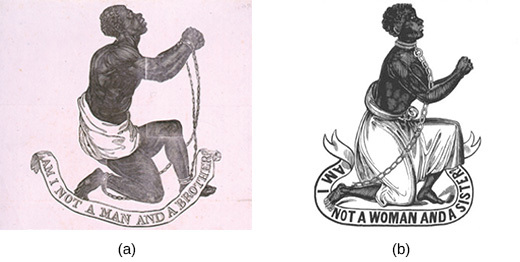| << Chapter < Page | Chapter >> Page > |
Abolitionists took a far more radical approach to the issue of the slavery by using moral arguments to advocate its immediate elimination. They publicized the atrocities committed under slavery and aimed to create a society characterized by equality of blacks and whites. In a world of intense religious fervor, they hoped to bring about a mass awakening in the United States of the sin of slavery, confident that they could transform the national conscience against the South’s peculiar institution.
William Lloyd Garrison of Massachusetts distinguished himself as the leader of the abolitionist movement. Although he had once been in favor of colonization, he came to believe that such a scheme only deepened racism and perpetuated the sinful practices of his fellow Americans. In 1831, he founded the abolitionist newspaper The Liberator , whose first edition declared:
I am aware that many object to the severity of my language; but is there not cause for severity? I will be as harsh as truth, and as uncompromising as justice. On this subject, I do not wish to think, or speak, or write, with moderation. No! No! Tell a man whose house is on fire to give a moderate alarm; tell him to moderately rescue his wife from the hands of the ravisher; tell the mother to gradually extricate her babe from the fire into which it has fallen;—but urge me not to use moderation in a cause like the present. I am in earnest—I will not equivocate—I will not excuse—I will not retreat a single inch—AND I WILL BE HEARD.
White Virginians blamed Garrison for stirring up slaves and instigating slave rebellions like Nat Turner’s.
Garrison founded the New England Anti-Slavery Society in 1831, and the American Anti-Slavery Society (AASS) in 1833. By 1838, the AASS had 250,000 members, sometimes called Garrisonians. They rejected colonization as a racist scheme and opposed the use of violence to end slavery. Influenced by evangelical Protestantism, Garrison and other abolitionists believed in moral suasion , a technique of appealing to the conscience of the public, especially slaveholders. Moral suasion relied on dramatic narratives, often from former slaves, about the horrors of slavery, arguing that slavery destroyed families, as children were sold and taken away from their mothers and fathers ( [link] ). Moral suasion resonated with many women, who condemned the sexual violence against slave women and the victimization of southern white women by adulterous husbands.

Read the full text of John Greenleaf Whittier’s antislavery poem “Our Countrymen in Chains.”
What imagery and rhetoric does Whittier use to advance the cause of abolitionism?

Notification Switch
Would you like to follow the 'U.s. history' conversation and receive update notifications?